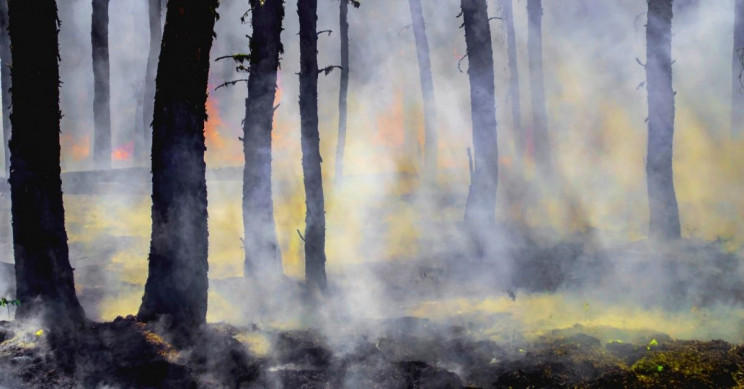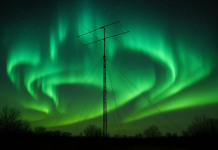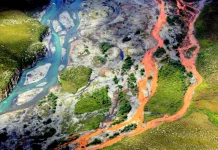
Siberia is on fire… And it’s only May… If you look closer at it, it seems that some of those wildfires never went out after last summer. They indeed continued to burn in a bitter-cold environment of nearly -60ºF (-50ºC).
Now these zombie fires are slowly starting to emerge out of the snow. And I bet you, they are responsible for the unprecedented early wildfire start… It’s not global warming!
This peat fire outside Khandyga, for example, was first seen by locals in Nov ’20. The footage by The Siberian Times (filmed end of Feb ’21 at -30°C) shows that it didn’t stop burning:
Could the early start of wildfires in areas as cold as Oymyakon in Yakutia be linked to the so-called ‘zombie’ (peat) fires? This one outside Khandyga, for example, was first seen by locals in Nov ’20. Our footage (filmed end of Feb ’21 at -30C) shows that it didn’t stop burning pic.twitter.com/NYkt013U2n
— The Siberian Times (@siberian_times) May 2, 2021
Last week, authorities put Novobirsk’s 1.7 million residents under what’s known as a “black sky” air quality warning as smoke from nearby wildfires blanketed the city.
In late April, the Siberian Times reported that 27 houses were destroyed in the city of Kemerovo and 50 in Russia’s third-largest city of Novosibirsk, with more destruction in other surrounding districts.
Beginning of 2021, locals also reported fires burning near the area hit by last summer’s wildfires at the bitter cold temperature of -58ºF (-50ºC).
They explained: “This area suffered extremely hot and dry weather. It must be either peat on fire here, or, as some hunters who noticed these fires suggest, possibly young coal (lignite).”
As if the summer fires didn’t stop. And this was the coldest winter in Yakutia since 2006, with air temperatures dropping to an unconscionable -74.2ºF (-59ºC) peak, and this record-setting coldness lasted for weeks, from December 2020 to January of this year.
Right now, images gathered by the Copernicus Sentinel-2 satellites show a group of wildfires clustered near Oymyakon, a rural area known for being one of the coldest places on Earth.
##EUSpace for #fire monitoring
Multiple #wildland fires are ongoing near #Oymyakon in northeastern #Siberia, very close to the #Arctic circle
⬇️@Copernicus #Sentinel2 ???️image acquired today 2 May, shows the pyrocumulus generated by the flames ? pic.twitter.com/If98wEEmE2
— ?? DG DEFIS #StrongerTogether (@defis_eu) May 2, 2021
What are peat fires?
Zombie fires smolder slowly at a low temperature and spread underground, making them difficult to detect, locate and extinguish. They produce little flame and much smoke, which can become a threat to public health as the smoke creeps along the land and chokes nearby villages and cities.
Peat fires are the largest fires on earth… They’re very difficult to put out because they’re deep…
Pristine peat is too wet to burn. But when it dries out (inadequate snow, deforestation or draining) it becomes flammable. Nature’s solution to this problem is torrential rains that can completely flood the peatland.
One manmade strategy for generating water is to stimulate rain through cloud seeding. Another approach to fighting peat fires is to tackle the network of narrow tunnels that deliver nutrients in waterlogged peat, but also allow oxygen to reach underground fires.
So yes, these fires can survive under the snow because of these narrow tunnels in peatland that bring oxygen to the underground fires…
So please don’t always blame climate change for thes amazing but natural phenomena… The fires were protected by the snow from the outside and were fed with oxygen through these small underground channels… [Earther, Ensia, Interesting Engineering]
Now subscribe to this blog to get more amazing news curated just for you right in your inbox on a daily basis (here an example of our new newsletter).
You can also follow us on Facebook and/ or Twitter. And, by the way you can also make a donation through Paypal. Thank you!
You should really subscribe to QFiles. You will get very interesting information about strange events around the world.














Nuke it, and then the oxygen won’t feed the flames. ?